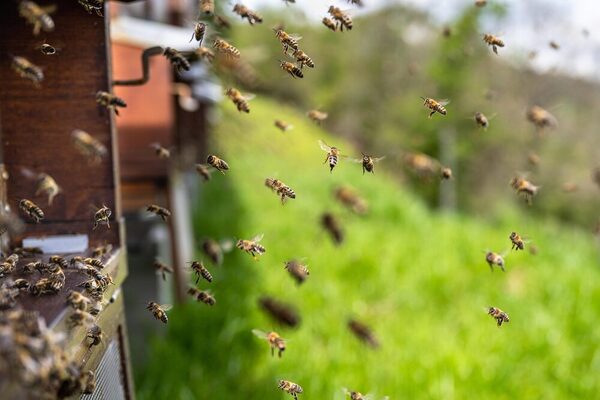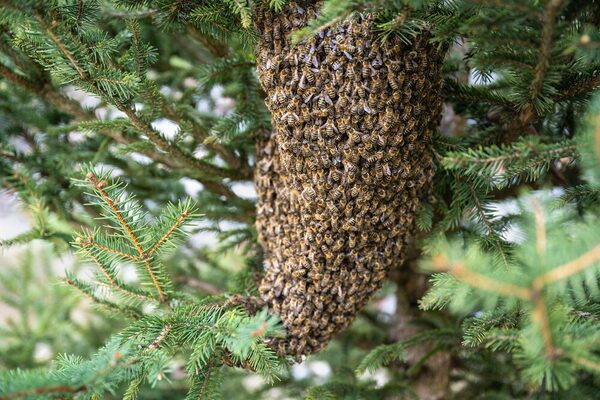Honey bees
The honey bee provides us with the sweet spread and is certainly familiar to everyone. Honey bees live in social structures with a queen, worker bees and, during the mating season, males (drones). Up to 50,000 animals live in large colonies.
As a so-called mass pollinator, the honey bee ensures higher yields in agriculture and orchards. They are therefore an important beneficial animal. In Germany alone, the economic benefits of pollination amount to over two billion euros per year.
An "eternal state"
In contrast to colony-forming wild bees or wasps, honey bee colonies do not disintegrate at the end of the year. The colony merely reduces its number of individuals and can survive the winter as a community if it has sufficient supplies, suitable accommodation and stable health. For this purpose, the animals move together in a winter cluster and keep each other warm. The temperature inside the cluster can reach between 20 and 30 degrees Celsius. In spring, the colony builds up again.
Are honey bees wild animals?
Archaeological finds prove that humans were already extracting honey and wax from bee colonies in the Stone Age. Targeted beekeeping began when people started to settle down. This took place between 5500 and 1800 BC. People selected honey bee colonies according to their wishes. Today, honey bees living in Germany are generally peaceful and highly productive. "Modern" honey bees are dependent on humans. The introduction of varroa mites in the 1970s in particular posed a major threat that they themselves are unable to counteract sufficiently. If left untreated, infested colonies usually die after a few years.
When bees leave their beekeepers
It can happen that a honey bee colony divides. This usually happens in May or June. Beforehand, the bees have raised a new queen. Shortly before this queen hatches, the old queen moves out with some workers as a swarm. If the bees have not yet found a new home, the swarm often gathers visibly around the queen (see photo).
As long as a honey bee colony is in the care of a beekeeper, this person remains the owner of the animals. A swarm that has escaped belongs to the beekeeper for as long as he or she pursues it. According to § 962 of the German Civil Code (BGB), the beekeeper even has the right to enter other people's property. If the pursuit is abandoned, the swarm is considered orphaned.
If a swarm is not caught promptly, it will move into a cavity as soon as possible. Finding this is the task of individual tracker bees. After a successful search, they lead the waiting swarm to its new home. This can be a natural cavity or an artificial one, such as a shutter box.
It makes sense to capture swarms of bees as long as they are easily accessible.
If you do not know a beekeeper yourself who is interested in taking on an orphaned swarm, you can contact local beekeeping associations. The Imkerverein Wiesbaden e.V. offers an emergency telephone service during the swarming period. Swarming bees should be reported as soon as possible, as the animals often do not remain in the cluster for very long.
Incidentally, a swarm of bees is not an emergency because the animals are aggressive towards humans. Even if a swarming colony is a spectacular sight, the animals are generally peaceful. Nevertheless, you should not get too close to a swarm.
Feral honey bees
It is rare for an escaped honey bee colony to survive in the wild for any length of time. The offspring born after swarming are then legally considered to be living in the wild again. Such a feral bee colony is subject to general species protection in accordance with Section 39 of the Federal Nature Conservation Act.
New threat to honey bees
Asian hornets are becoming increasingly established in Wiesbaden and the surrounding area.
They systematically hunt for honey bees and are therefore perceived as a serious threat by the beekeeping community.
Asian hornet nests must be reported. You can find a link to the reporting portal on the Asian hornets information page.

